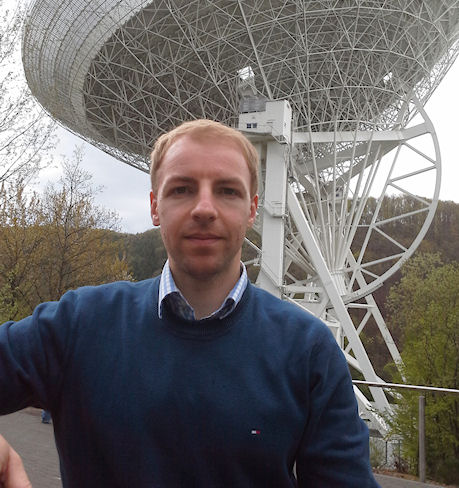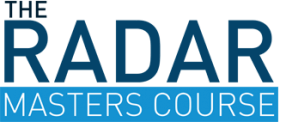Welcome to our new course convenor: Dr Daniel O'Hagan


Where have you worked previously?
I started working for the German FGAN in 2009. Later that year FGAN FHR became an institute of the Fraunhofer Society, and since then we have been Fraunhofer FHR, the Fraunhofer Institute for High Frequency Physics and Radar Techniques.
As one of Europe’s foremost radar research establishments, FHR pursues all manner of radar, EW and mm-wave research. Our site in Wachtberg is famous for the giant Tracking and Imaging Radar (TIRA). FHR has provided a profoundly stimulating and rewarding work environment, and l shall be working to establish a solid collaboration framework between FHR and UCT.
What have been your main research interests?
My main research focus is passive/commensal radar.
For my Ph.D., I developed an FM radio based passive radar demonstrator, which I used to characterise key elements pertinent to system performance.
In my subsequent employment at FHR, I have worked with passive radars using digital transmissions of opportunity, DAB and DVB-T. FHR has a number of sophisticated passive radar demonstrators and are always driving forward with developments in novel system architectures, antenna arrays and novel processing algorithms.
Through my involvement in NATO groups I have researched, and have led research, to address critical unknowns in relation to passive radar and to mature their performance for greater military relevance and acceptance.
In addition to passive radar, I have an interest in VHF radar, antenna array design and beamforming, LPI techniques, low-observable platform design considerations, bistatic clutter and knowledge aided sensing.
What is attracting you to move to South Africa, Cape Town, and specifically to UCT?
I first became aware of UCT, and particularly the UCT Radar and Remote Sensing group, during the early stages of my Ph.D. I was a student at University College London where Prof. Inggs happens to be a Visiting Professor. During his visits to UCL, Prof. lnggs would always provide guidance and technical input to my work. We have kept in regular contact since then during my time at FHR.
My main attraction to my new post at UCT is that it takes me directly into radar academia. I look forward to working with motivated radar and EW students and getting involved with their projects.
I believe the UCT Radar Masters has been an excellent initiative. It provides a very accessible means for students to study all of the relevant radar and EW topics. There has been a wide demand for well-qualified radar engineers, which the Masters course is addressing.
I am looking forward to sustaining and expanding our base of outstanding radar lecturers so that we can continue to set the trend in producing a cadre of well-qualified and proficient radar engineers and researchers.
UCT is also fortunate to boast one of the world’s most beautiful campuses and I feel ready to embrace the wonders of Cape Town!
What modules will you be teaching in the Radar Masters Programme?
My first UCT teaching duty commences in July with the course ‘Microwave Components and Antennas’. This course will be taught jointly with Prof. Barry Downing.
Are you intending to supervise any research projects? And if so, in what areas?
Yes. I expect to become very engaged in the supervision of many of the Masters and Ph.D. students. I enjoy systems engineering and like to see the practical utility of novel developments. I anticipate being involved with various aspects of passive radar developments. However, my supervision duties will not be restricted to only this area.
What are you most looking forward to here – personally, academically, professionally…?
I’m looking forward to so many new experiences. I’m excited by my new role in radar academia and in being the new Convenor of the UCT Radar Masters Course. I thoroughly enjoy working with students to advance radar technology. I am also looking forward to working with my new colleagues and to helping to continue developing excellent teaching and research programmes.
South Africa is a wonderful land with amazing wildlife and landscapes. I plan to tour some of the national parks and watch the Big Five go about their daily affairs!
What is the telescope in the background of your photograph?
It is the Effelsberg Radio Telescope of the Max Planck Institute for Radio Astronomy. With its 100 m diameter dish, it is one of the largest mechanically-steerable antennas in the world. It is used to observe pulsars, cold gas- and dust clusters, the sites of star formation, jets of matter emitted by black holes and the nuclei (centres) of distant far-off galaxies.
Welcome to South Africa – and to the UCT Radar Masters Programme!
